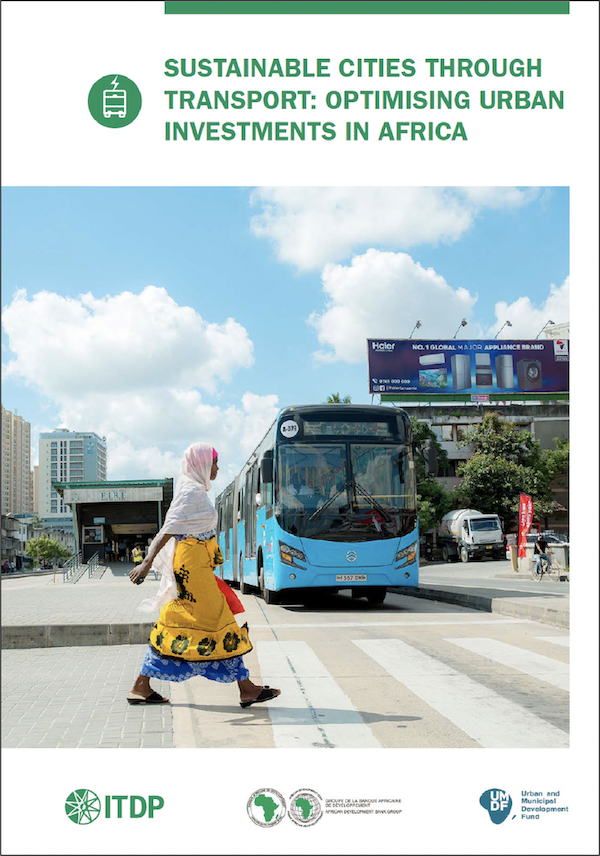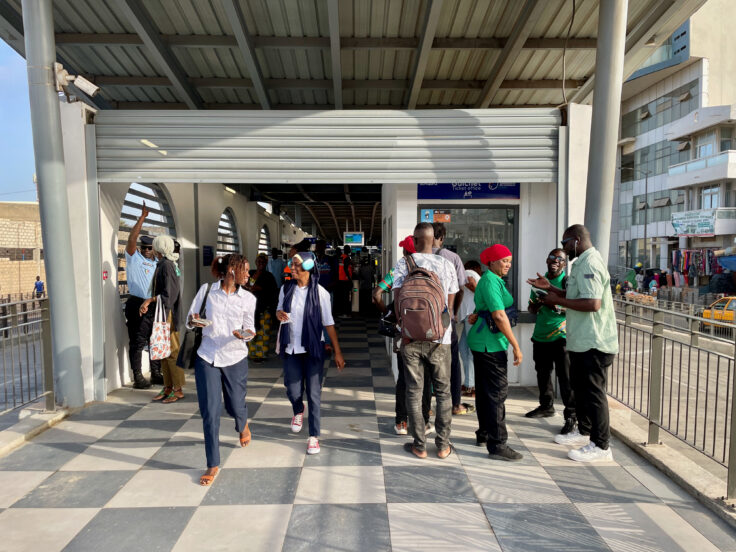November 04, 2024
Africa’s Future Depends on Investments into Compact, Electric Cities
Africa’s urbanization is accelerating the demand for sustainable transport solutions.
 However, current investments are still heavily skewed towards private vehicle infrastructure, leading to traffic congestion, environmental degradation, and limited access to efficient public and non-motorized transport (NMT) options. A recent report from ITDP Africa, Sustainable Cities Through Transport: Optimizing Urban Investments, focuses on pathways to address these issues by prioritizing mass rapid transit, walking, and cycling that offers cities a future of inclusive, low-carbon urban mobility.
However, current investments are still heavily skewed towards private vehicle infrastructure, leading to traffic congestion, environmental degradation, and limited access to efficient public and non-motorized transport (NMT) options. A recent report from ITDP Africa, Sustainable Cities Through Transport: Optimizing Urban Investments, focuses on pathways to address these issues by prioritizing mass rapid transit, walking, and cycling that offers cities a future of inclusive, low-carbon urban mobility.
This is critical because Africa’s economic potential is intrinsically linked to the development of transport infrastructure, which is vital for fostering economic growth, facilitating trade, and improving quality of life. The need for long-distance trade corridors that enable the movement of goods has long dominated the discourse around transport in the region. But, equally critical, are the facilities for moving people themselves within cities. As Africa becomes a more urbanized continent, cities will require transport systems that are inclusive, efficient, and safe for all. Presently, urban transport in Africa is characterized by the prevalence of unregulated, informal, and unsafe public transport.
In the absence of dedicated road space for public transport, buses and minibuses are often stuck in traffic, resulting in time-consuming and expensive trips. Most corridors lack well-designed walking and cycling facilities, and street designs usually prioritize the convenience of private cars over the needs of pedestrians and cyclists. Countries often lack proper design standards for urban streets, and existing manuals prioritize motorized vehicles over non-motorized modes of transport. Continued investments in road infrastructure and urban highways are inducing a shift to greater private vehicle use, resulting in more congestion, higher travel costs, road safety risks, and rampant greenhouse gas emissions.

The report from ITDP Africa outlines four potential investment scenarios for Africa’s transport sector: Business-as-Usual (BAU), Electrification, High Shift, and High Shift + Electrification. This draws on ITDP’s previous Compact City Scenario research that makes assessments at a global and national level. Under the BAU scenario, continued road expansions and car-centric infrastructure result in worsened congestion, increased emissions, and rising transport costs. The Electrification scenario focuses on transitioning to electric vehicles (EVs) which, while beneficial for reducing fuel consumption and air pollution, does not resolve congestion or improve urban accessibility.
In contrast, the High Shift scenario, which emphasizes significant investments in public transport and NMT infrastructure, presents a compelling but not fully realized solution. This approach envisions cities developing more bus rapid transit (BRT) networks, cycle tracks, and pedestrian-friendly streets that emphasize density, which can transform urban mobility and reduce cumulative CO2 emissions. Emissions reductions estimates are nearly 5.078 million metric tons of CO2 equivalent (Mt CO2e) through High Shift in African countries, which is well below the 1.5°C warming threshold, and it can also reduce infrastructure investment costs by over USD 2.140 billion.
Together, a High Shift + Electrification scenario combines the benefits of sustainable transport systems with electrification, delivering additional environmental and cost-saving advantages. Improving financing mechanisms for both electrification and compact development is, of course, critical to achieving these outcomes.To support large-scale investments in BRT, cycle networks, pedestrian infrastructure, and electrified transport, governments must leverage a combination of public funds, private sector participation, and development finance. The report emphasizes the need for clear, long-term investment strategies aligned with urban development goals.
Mechanisms such as public-private partnerships, international development loans, and innovative financing tools (e.g. land value capture) can help mobilize the necessary capital towards these scenarios. Additionally, implementing traffic demand management policies, such as congestion pricing and dynamic parking enforcement, can help generate revenue to support and sustain public transport investments. By adopting a comprehensive financing strategy and prioritizing sustainable mobility, African cities can unlock a number significant economic, social, and environmental benefits from a High Shift + Electrification future.
As in other regions, such a shift in Africa’s urban mobility landscape will help to create equitable, accessible, and low-carbon infrastructure that makes the continent more resilient and livable for all. Read the full report here.
